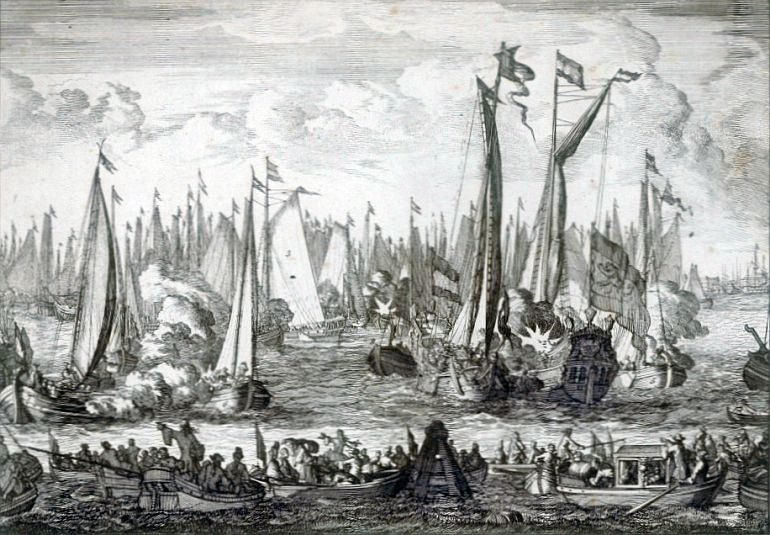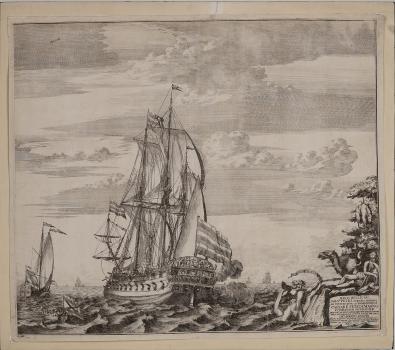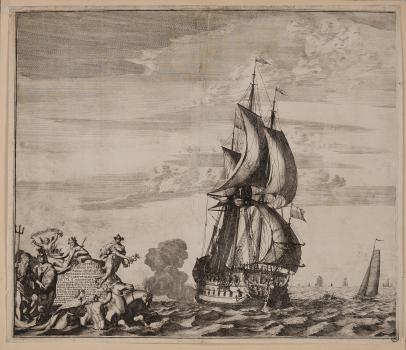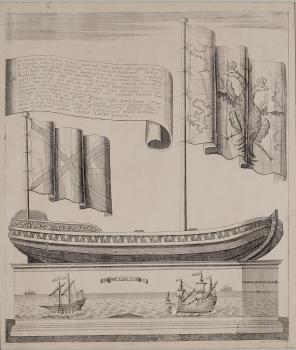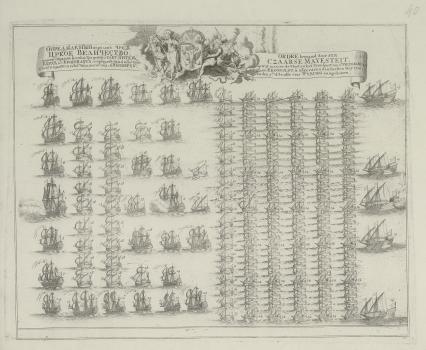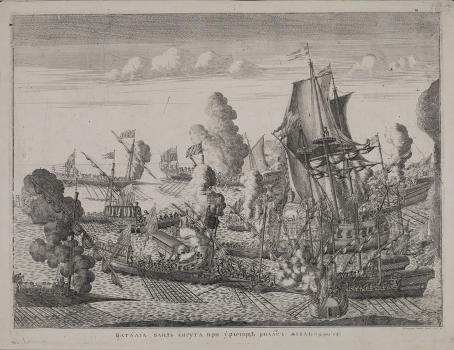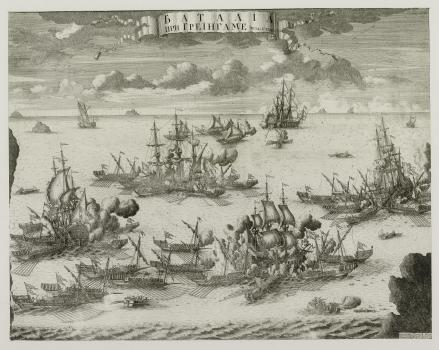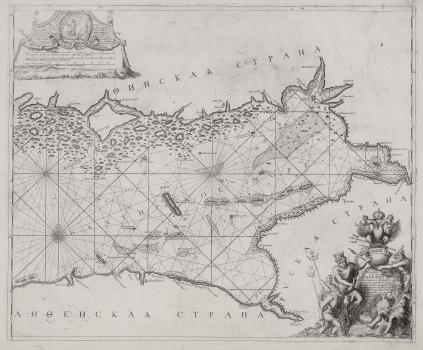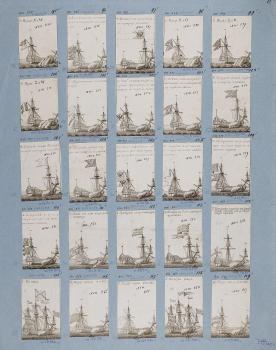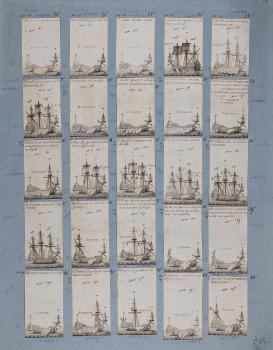"For the knowledge of all the people": engravings of the time of Peter the Great in the collection of the National Library of Russia. Marking the 350th anniversary of Peter the Great
Northern War: Naval Battles and Fleet
All important stages in building a powerful Russian Navy are depicted in engravings. n 1701, Pieter Picart, invited to Russia by Peter the Great, made two views (from the bow and from the stern) of the 58-gun warship Goto Predestinatia (literally The Foresight of God), launched at the Voronezh shipyards in 1700.
The engravings have a parallel Russian-Latin text, so they could play an important role in distribution of visual information about the successes of Russian shipbuilding both abroad and in the country.Engravings aslo captured the Boat of Peter I, built back in the 17th century. In 1722, it was displayed in the Peter and Paul Fortress, as a landmark and a museum exhibit. As indicated in the engraving, it was "presented" to people in recognition of Peter's achievements. Indeed, Peter the Great is associated in public mind with the establishment of a modern Russian Navy. In many ways, such an attitude to these events was formed during the life of the emperor.
Engraving also reflected the key naval victories of the young Russian fleet. So, in the spring of 1710, Russian ships were sent to help the army besieging Vyborg. The way was difficult because of the ice on the Gulf of Finland, which did not completely melt or drift away. However, despite the challenging weather conditions, Russian ships managed to reach Vyborg from the sea. They deliver supplies, weapons and reinforcements and blockaded the city. Due to Russian artillery firing. the Swedes suffered heavy losses and capitulated. The capture of Vyborg allowed Russia to eliminate a Swedish threat to St. Petersburg and Kronschlot and opened a way to Finland. Around 1711, Pieter Picart made a detailed engraved image of the order of Russian ships on the way to Vyborg.
During the Northen War, on July 27, 1714, the famous naval Battle of Gangut took place near the Hanko Peninsula. Fighting ended with the victory of the Russian fleet. Peter the Great compared this triumph with an equally resounding land victory at Poltava. It was the first important victory of the Russian Navy in its history. The Russians managed to capture ten Swedish ships. An engraving by Alexei Zubov depicts the moment when the Swedish ship Elefanten was surrounded by Russian vessels.
Six years after the Battle of Gangut, on July 27, 1720, the Russian Navy won another great naval victory in the Great Northern War. This allowed Russia to finally consolidate on the Baltic Sea and marked the end of the Northern War between the Russian and Swedish.
